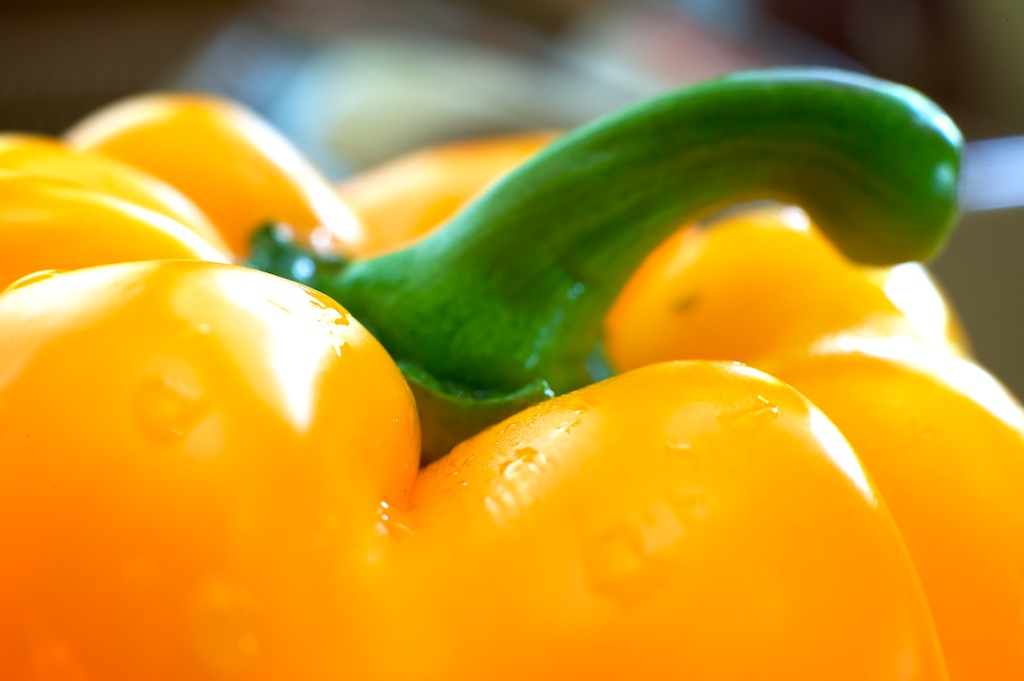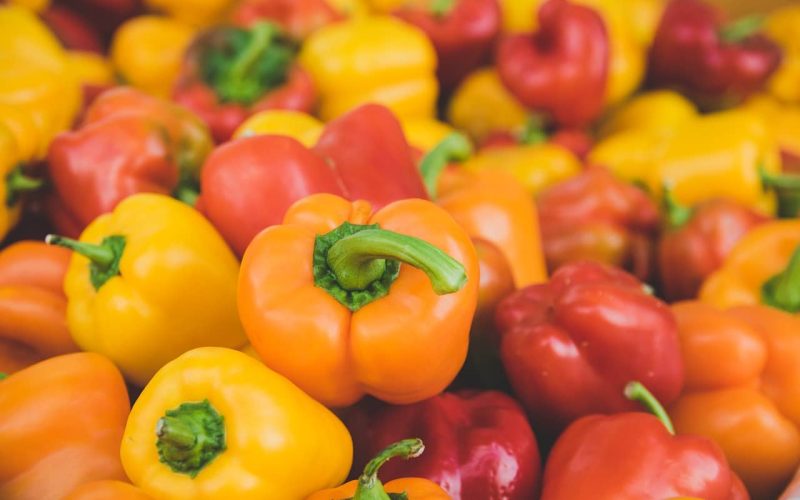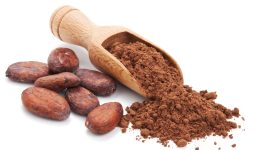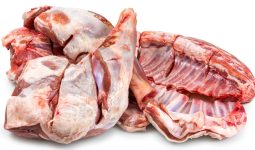This article completely lists yellow foods. Before we start, let’s examine what they offer.
There are numerous health benefits to eating yellow fruits and veggies. These foods are vibrant in color because they are high in carotenoids.
Additionally, they contain healthy vitamins, minerals, and antioxidants. These can potentially cleanse the skin and boost the immune system.
Additionally, they contain bioflavonoids, which ward off illnesses and can improve bone, dental, and hair health.
Yellow foods have a lot of advantages, but it’s best to consider what each one offers rather than considering them all at once.
The biological pigments in foods that are yellow give them their color.
The two most prevalent kinds are carotenoids, which produce a rich orange or yellow color, and anthocyanins, which provide a pale yellow color.
The intense yellow color produced by the curcumin and crocin molecules in Tumeric and saffron is due to carotenoids.
These substances can provide health benefits through our diets and have antioxidant characteristics that protect plants.
Here are some of the best foods that are yellow.
1. Asian Pears
Asian pears, often called Japanese, Korean, Taiwan, and other names, resemble apples but have a sweet-tart scent. Rosaceae, or the rose family, is the name of these uniformly yellowish-tan fruits.
This particular variety of pear is a good source of antioxidants and vitamin C, which boost your immune system and provide the collagen you need to keep your skin healthy.
Also, they are a rich source of vitamin K and have a high fiber content to maintain a healthy digestive tract.
2. Banana
Bananas are precisely what the doctor prescribed to keep your body healthy, so forget the adage “an apple a day.” This beloved family fruit may give you your recommended daily intake of vitamins and minerals.
It comes from a tropical flowering plant in the Musaceae family. Bananas include magnesium, vitamin C, and B6 and are loaded with potassium, antioxidants, and pectin.
Bananas are one of the yellow foods. They should be your new favorite foods because they support heart health and prevent hypertension.
3. Butter
If you enjoy baking, butter must be one of your closest friends because it gives every dish a wonderful flavor.
Butter is made from milk or cream’s fat and protein components. Due to annatto or carotene, its hue often ranges from pale yellow to deep yellow to white.
Furthermore, butter is associated with weight gain and heart disease risk because it contains about 80% fat, even if several studies disprove this notion.
Butter is a strong source of vitamin A and, when consumed in moderation, is also high in vitamins D, E, B12, and K2.
4. Pineapples
The pineapple is the third most popular tropical fruit in the world. It is native to South America and can be eaten.
Pineapple juice and meat are used in cuisines worldwide. The meat is offered whole or in half, with the sticks within.
These luscious, juicy tropical fruits can be grilled, added to salads, or used as a pizza topping. They contain antioxidants, vitamins, and enzymes. They are also rich in manganese, vitamin C, and A. They are also high in dietary fiber and low in starch.
5. Cheese
Cheese, another dairy item on the yellow list, is undoubtedly one of the most common ingredients used in cooking worldwide. The casein protein found in cow, buffalo, goat, or sheep milk thickens it.
By adding annatto, the cheese can be made yellow to crimson. The cheese you choose might lend a sense of saltiness, savouriness, or tanginess to the food you prepare. It also offers a rich flavor and texture.
Depending on the type, cheese can provide a lot of calcium and protein, but it can also be high in calories, sodium, and saturated fat. Perhaps it is one to be appreciated in moderation.
6. Lemons
This ellipsoidal yellow fruit is native to South Asia, mainly northeastern India. Lemons are utilized worldwide for culinary and non-culinary purposes, mainly for their juice.
However, the pulp and rind can be used in baking and cooking. The juice is vital to many meals and beverages because of its distinctively sour flavor. It has a PH of about 2.2 and contains 5-6% citric acid, which gives it a bad taste.
7. Chrysanthemum Flower Tea
Chrysanthemums make a healthful tea that has been used for centuries as a traditional remedy, especially in China. They also make lovely flowers for your yard.
It is supposed to induce a sense of calm, relax nerves, ease anxiety, and reduce inflammation and blood pressure. It is abundant in minerals, including potassium, magnesium, phosphorus, calcium, and iron.
8. Corn
The most significant crop in the United States and a staple food in many other countries is corn, maize, or sweetcorn. Native civilizations in Mexico and America were the first to cultivate this yellow maize, a domesticated member of the Poaceae family of cereal plants.
In the US, this yellow meal is used as traditional Autumn harvest décor, cattle feed, and biofuel.
Furthermore, Thiamin, niacin, pantothenic acid, and folate are B vitamins that corn provides in abundance. Corn is also a fantastic source of dietary fiber and contains the vital minerals phosphorus and magnesium.
9. Potatoes
These starchy tubers are a healthy dietary source and a staple in various recipes worldwide. Around 5000 different potato cultivars have been identified thus far. Due to how badly humans digest raw potato starch, they are rarely consumed uncooked.
Furthermore, They are excellent sources of fiber, vitamin C, and potassium, which lower your risk of systolic blood pressure and stroke.
Additionally, they are poor in protein and have a high glycemic index of carbs.
10. Honey
Bees and several other insects generate honey, a sweet, viscous liquid. In a structure known as a honeycomb, bees keep their honey.
It is a sweetener in several goods and derives its sweetness from the monosaccharides glucose and fructose.
Furthermore, the cholesterol-lowering effects of honey. A diabetic person is unaffected, and it also lowers blood pressure. It also contains a lot of antioxidants.
11. Cornflakes
Did you know that in the 1870s, cornflakes were introduced as breakfast cereal? This popular breakfast comprises rolled, cooked, dried, and roasted corn grits served with milk to ward off hunger.
However, while the cereal may contain a variety of vitamins from the corn, due to the processing it has undergone, it frequently has a lot of added sugar and is deficient in fiber.
However, if eaten with fruit as part of a balanced meal, cornflakes can still be a part of a nutritious diet.
12. Durian
Compared to the smell of decaying flesh, the spicy scent of this enormous fruit coated in thorns is well recognized. But if you talk to a durian enthusiast, they’ll tell you this light-yellow fruit is delicious.
Furthermore, the unusual durian is considered the “king of fruits” in Southeast Asia. It has more nutrients than most other fruits and is a fiber, B vitamins, and C powerhouse.
However, it can alienate close friends and family members: you either love or loathe durian.
13. Eggs
Eggs are included on the list of yellow foods because of their vibrant, orange-yellow yolks, which give the meals used color. Egg-based foods come in shades of yellow, from omelets to scrambled eggs to lemon curd.
Even the yolks of various eggs vary in hue, which many believe is tied to the breed of chicken from which they were produced.
It has little to do with the species of chicken and everything to do with her diet; hens that eat foods high in carotenoids, such as grass, maize, and flowers, will produce eggs with dark yellow to orange yolks, whereas those that eat a diet based on wheat and barley will produce egg yolks. This egg yolk that is so pale they are almost white.
14. Egg Fruit
The vivid yellow flesh of this fruit, also known as Canistel, gives it the nickname “eggfruit” because it resembles a hard-boiled egg yolk.
The plant is related to the sapodilla and the Mamey sapote because it is a member of the Sapotaceae family.
Eggfruit has a neutral, sweet flavor with undertones of sweet potato, pumpkin, mango, and other tropical fruits.
Beta carotene is abundant in this yellow vegetable, giving you a healthy serving of calcium and phosphorus for your bones and teeth.
15. Cheese-Puff
Corn treats covered with cheese or cheese-flavored powder include cheese puffs, cheese balls, cheese curls, and corn curls.
They can have uneven, curved, straight, or ball-shaped puffs. Two separate American businesses invented these puffs in the 1930s.
Furthermore, they are tossed with the proper taste after being fried or oven-dried, then fried again afterward. They have few calories and little salt, potassium, fat, or carbohydrates.
16. French Fries
Golden fries are undoubtedly a global favorite, but these potato sides are typically seen negatively and have a good serving of guilt!
Despite the consensus among nutritionists that we should limit our fried food intake, a study on blood parameters in kids who were given French fries against other types of carbohydrates discovered that the latter can assist youngsters with lower insulin and blood glucose levels.
17. Golden Zucchini
Summer squashes, like zucchini, are often called courgettes or baby marrow and are consumed while the skin and seeds are still edible.
Deep yellow or orange is the color of the golden zucchini. It is low energy but still offers a rich dose of folate, potassium, and pro-vitamin A. Thus, it lends itself to a balanced diet.
18. Jackfruit
The national fruit of Sri Lanka and Bangladesh is this sizable, spikey fruit. It is a giant fruit with yellow flesh, edible seeds, and pods weighing up to 100 pounds.
Also, unripe jackfruit is used in savory cooking and is a common meat alternative in vegetarian recipes. Furthermore, when ripe, jackfruit has a sweet flavor and a texture comparable to pineapple.
Also, it contains many essential vitamins and minerals that help keep your body healthy, including vitamin C, potassium, dietary fiber, and several others.
19. Longan
These native Asia fruits come from the longan or Dimocarpus longan plant. They have a golden exterior and lychee-like white, sweet, juicy flesh.
This tropical fruit is abundant in vitamin C and antioxidants. In China and other Asian nations, it is utilized in traditional cooking for bread, puddings, and even desserts!
These fruits can be frozen whole on a hot day and consumed as popsicles for a wholesome, convenient, and plentiful treat.
Traditional Chinese medicine has employed longan fruit and seeds for several ailments for ages.
Furthermore, Research on longan extracts has shown that both the fruit and seeds contain anti-cancer qualities and may have a role in treating diabetes, even though several of its traditional uses, such as extracting snake venom from a bite site, have failed to hold up to scientific testing.
20. Loquat
This odd yellow fruit, which is endemic to South Central China and is a member of the Rosaceae family, is sometimes referred to as the Japanese medlar, Japanese plum, and Chinese plum.
Depending on the cultivar, it has smooth yellow or orange skin and juicy, sour-ish, and occasionally sweet meat.
Loquat is a healthy addition to your diet because it is abundant in vitamin A, vitamin B6, dietary fiber, potassium, and manganese and low in sodium.
21. Mango
This yellow tropical fruit is widely farmed throughout its native South and Southeast Asian tropics. The fruit has a leathery, waxy, fragrant skin that, depending on the variety, can range from green to yellow with hints of pink or red.
The flesh’s interior is sweet, tangy, and somewhat fibrous. Prebiotic dietary fiber, flavonoids including -carotene, -carotene, and -cryptoxanthin, vitamins A, B6, C, and E, as well as potassium, are all abundant in mango.
Mangoes are a popular breakfast dish and can be had fresh or dried. The unripe fruit is sometimes used in Asian cuisine to give chili sauces like Indonesian sambal a sour kick.
22. Mirabelle Plum
While most people associate plums with their purple hue, this yellow variety is prized for its sweet, robust flavor. Yellow Mirabelle plums are often used to make pies and preserves. The fruit has a tart flavor when eaten fresh.
The Mirabelle plum’s juice is fermented to make wine and distilled to make brandy. These plums have a very high potassium and vitamin C content, supporting a strong immune system and a healthy heart.
23. Yellow Pepper

A sweeter, less spicy pepper variation is the yellow bell pepper. Botanically speaking, peppers are fruits known as berries. However, they are eaten as vegetables or as side dishes.
The ideal environment for producing bell peppers is warm and humid. They are frequently added to salads, pizza, and cheesesteaks as toppings. They could be included in tastes or spices.
Furthermore, Turkey, Mexico, and China are the next-largest producers of bell peppers, respectively. Also, yellow pepper is low in calories and rich in iron, vitamin A, vitamin C, potassium, fiber, and folate.
24. Mustard
This yellow condiment is one of our favorite sauces for meats, salads, and sausages. The sauce’s primary component, mustard seeds, gives it its fiery kick, hence its name.
Today’s selection of mustard condiments is made possible by adding additional components, including vinegar, lemon juice, and salt.
Furthermore, you may be sure that your favorite sauce is providing you with some nutrients in addition to a punch of taste because mustard seeds are known to contain selenium and omega-3 fatty acids.
25. Olive Oil
Olive oil can be of various colors, typically green to yellow, depending on its quality. One of the mainstays of a Mediterranean diet, olive oil is a rich source of vitamins A, D, K, and E, antioxidants, omega-5 fatty acids, and other elements that support good health.
It benefits your heart and memory when consumed in moderation and as part of a balanced diet.
Olive oil, one of the yellow foods, positively affects the skin and is a common ingredient in massage oils and other cosmetic treatments.
26. Passion Fruit
The Passifloraceae, or passion fruit flower family, of plants includes these tropical fruits. Their fruits have thick skin that, depending on the variety, might be smooth or purple and rough.
Numerous black seeds are surrounded by a yellow pulp within. The fruit has a sweet and tangy flavor and is packed with amino acids, riboflavin, and niacin.
27. Egg Yolk
“yolk” refers to the egg’s central, yellow, and nutritionally dense region. It gives an embryo the nourishment it needs to grow.
It is abundant in proteins, fats, vitamins, and minerals. Also, it is suspended in egg white and has a spherical form.
Sometimes, the yolk is removed from the egg white and used to make dishes like hollandaise sauce, custard, and mayonnaise. Egg yolks contain saturated and unsaturated fatty acids and vitamins A, D, E, and K.
28. Peter’s Honey Fig
This variety of figs has lusciously sweet flesh and lovely yellow skin. Its flavor has been described as syrupy and honey-like.
This fruit contains antioxidants, vitamins B and K, copper, manganese, magnesium, calcium, and potassium. Like all figs, they are also relatively high in fiber, which is excellent for your digestive system.
29. Rutabaga
Rutabaga, sometimes called Swede or Swedish turnip in other areas, gets its name from the Swedish word “rotabagge.” This root vegetable typically has purple-tinged skin and pale yellow meat.
The flavor is quite sweet with a cabbage-like undertone. Vitamins C and E, potassium, calcium, magnesium, and vitamins B, B6, and folate are all present in rutabagas in significant concentrations.
When mashed or roasted, these vegetables make a terrific side dish and have fewer carbohydrates than potato substitutes.
30. Saffron
Given that it requires 75,000 saffron blossoms to produce just one pound of the spice, it is not surprising that saffron is the most expensive spice in the world. Even though it was often believed to be Greek, today, over 90% of commercial saffron is made in Iran.
Furthermore, the carotenoid pigment, crocin, found in the spice’s blooms, gives it its deep color and gives food a golden-yellow appearance. Saffron is high in antioxidants.
Researchers have studied the chemical components of saffron for potential health advantages, including appetite control and weight reduction support.
31. Starfruit
Starfruit, also known as carambola, is a bright yellow fruit with an odd form. It is indigenous to tropical Southeast Asia, has a sweet and sour flavor, and is a star when sliced. Although starfruit is an excellent source of fiber and vitamin C, it also contains a lot of oxalates.
First, you must speak with a doctor if you have kidney issues before eating this fruit because the oxalates could be poisonous.
32. Yukon Gold Potatoes
While the flesh of many potatoes might have a yellowish tint, the Yukon gold potato is the most yellow of all.
This cultivar, created in Ontario, Canada, in the 1960s, is distinguished by its thin, smooth, eyeless skin and yellow-tinted meat.
This potato may be used in various potato meals, including excellent mash and roast potatoes, and is rich in potassium and vitamin C.








